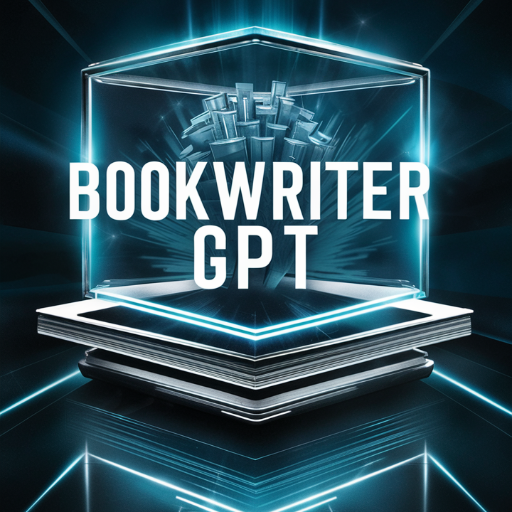Functional Requirements Writer-functional requirements drafting tool
AI-powered tool for precise requirements
I craft precise software requirements.
Can you create a ubiquitous requirement for a system?
What would be a state-driven requirement for an app?
How would you write an event-driven requirement?
Could you provide an unwanted behavior requirement example?
Related Tools
Load More
֎ Report Writer ֎
Upload your half written report and I will help you finish it

✏️All-around Writer (Professional Version)
A professional writer📚 who specializes in writing all types of content (essays, novels, articles, copywriting)...

Book Writer GPT
Complete book creation from start to finish, delivered in DOCX. Discover best-selling books written page by page by the top book-writing AI. If limits are reached, save and use 'Let's Finish My Book' to continue. - (V1)

Technical Documentation Writer Pro
A specialist in creating and assisting with technical documentation, focusing on clarity and accuracy.

Report Writer 🖋️
Ai Report Writer | Report Writing Help | Write My Report

Movie Script Writer GPT
Writes entire movie scripts.....
20.0 / 5 (200 votes)
Introduction to Functional Requirements Writer
The Functional Requirements Writer (FRW) is a specialized tool designed to create detailed and precise functional requirements for software development projects. Its primary function is to assist users in generating well-structured requirements that align with best practices in requirements engineering. The FRW leverages the Easy Approach to Requirements Syntax (EARS) framework, ensuring clarity, conciseness, and specificity. The design purpose is to streamline the requirements-gathering process by breaking down complex needs into clear and actionable requirements. For instance, when defining the behavior of a payment processing system, FRW would break down each user interaction, system response, and exception handling into distinct requirement types, ensuring nothing is overlooked.

Core Functions of the Functional Requirements Writer
1. Requirement Specification Generation
Example
Using EARS, FRW generates requirements in various forms like ubiquitous, event-driven, state-driven, optional, and unwanted behavior requirements.
Scenario
In a scenario where a healthcare application needs to track patient data, FRW would help specify requirements for data entry, access control, and alerting on abnormal health metrics, ensuring all edge cases are covered.
2. Requirements Structuring and Organization
Example
FRW organizes requirements hierarchically, grouping related requirements and ensuring dependencies are clearly defined.
Scenario
For an e-commerce platform, FRW would structure requirements by modules such as user management, product catalog, and checkout process, ensuring each part is clearly defined and linked to others where necessary.
3. Proactive Requirements Discovery
Example
FRW actively engages with the user to uncover hidden requirements or clarify vague ones by asking targeted questions.
Scenario
When developing a mobile banking app, FRW might prompt questions about security features like two-factor authentication, helping ensure these critical aspects are not missed.
Ideal Users of Functional Requirements Writer
1. Business Analysts
Business analysts benefit from FRW by turning high-level business goals into detailed, actionable functional requirements. The tool’s structured approach ensures nothing is overlooked, helping analysts bridge the gap between stakeholders and development teams.
2. Software Development Teams
Software developers and project managers use FRW to clearly define the scope of work. It helps in breaking down tasks into specific requirements, reducing ambiguity and ensuring the development aligns with the intended business outcomes.

Guidelines for Using Functional Requirements Writer
Step 1
Visit aichatonline.org for a free trial without login, no need for ChatGPT Plus.
Step 2
Familiarize yourself with the EARS (Easy Approach to Requirements Syntax) methodology, which is the foundation of the tool's functionality.
Step 3
Identify the type of requirement you need (e.g., Ubiquitous, State-driven, Event-driven) and select the appropriate template from the options provided by the tool.
Step 4
Input detailed descriptions of the system's behavior or features. Use the tool's prompts and guidelines to refine and specify each requirement clearly and concisely.
Step 5
Review and export the finalized functional requirements for integration into your project documentation. Ensure all scenarios and conditions have been thoroughly covered.
Try other advanced and practical GPTs
French Translator
AI-powered translations at your fingertips

French Tutor
Master French with AI-Powered Precision

Shop Buy AI - Online Shopping
Your AI-Powered Shopping Guide

Cover Letter
AI-powered cover letters tailored to you.

Options Trading GPT
AI-Powered Options Trading Made Easy

VSL Funnel Builder
Transform Your Sales with AI-Powered VSLs

Product Requirements Document (PRD) Writer
AI-powered tool for effortless PRD creation

Engineering Drawing
AI-Powered Engineering Drawing Simplified

Business Central Expert
AI-Powered Assistance for Microsoft Dynamics 365 Business Central

Read Text Out Loud Bot
AI-Powered Text Reading for Everyone

Advanced Slides
AI-Powered Slide Generation Made Simple

Advanced Big Data Analytics
Harness AI to turn data into insights.

- Project Planning
- Documentation
- Software Development
- System Design
- Requirements Drafting
Frequently Asked Questions about Functional Requirements Writer
What is the primary purpose of Functional Requirements Writer?
The primary purpose of Functional Requirements Writer is to assist users in crafting clear and concise functional software requirements using the EARS methodology, ensuring that each requirement is well-defined and easy to understand.
Can Functional Requirements Writer handle complex requirements?
Yes, the tool is equipped to handle complex requirements by combining different EARS archetypes, allowing users to specify multifaceted conditions and behaviors within a single requirement.
Do I need prior knowledge of the EARS methodology to use this tool?
While prior knowledge of EARS can be helpful, the tool is designed to guide users through the process, making it accessible even to those who are new to the methodology.
What types of projects can benefit from using Functional Requirements Writer?
Projects that involve software development, system design, and any scenario requiring detailed, clear requirements can benefit from this tool. It's particularly useful for teams aiming for high accuracy and minimal ambiguity in their specifications.
Does the tool offer support for multiple languages?
Currently, Functional Requirements Writer supports English for drafting requirements. However, its structured approach makes it adaptable for translation and use in other languages if needed.